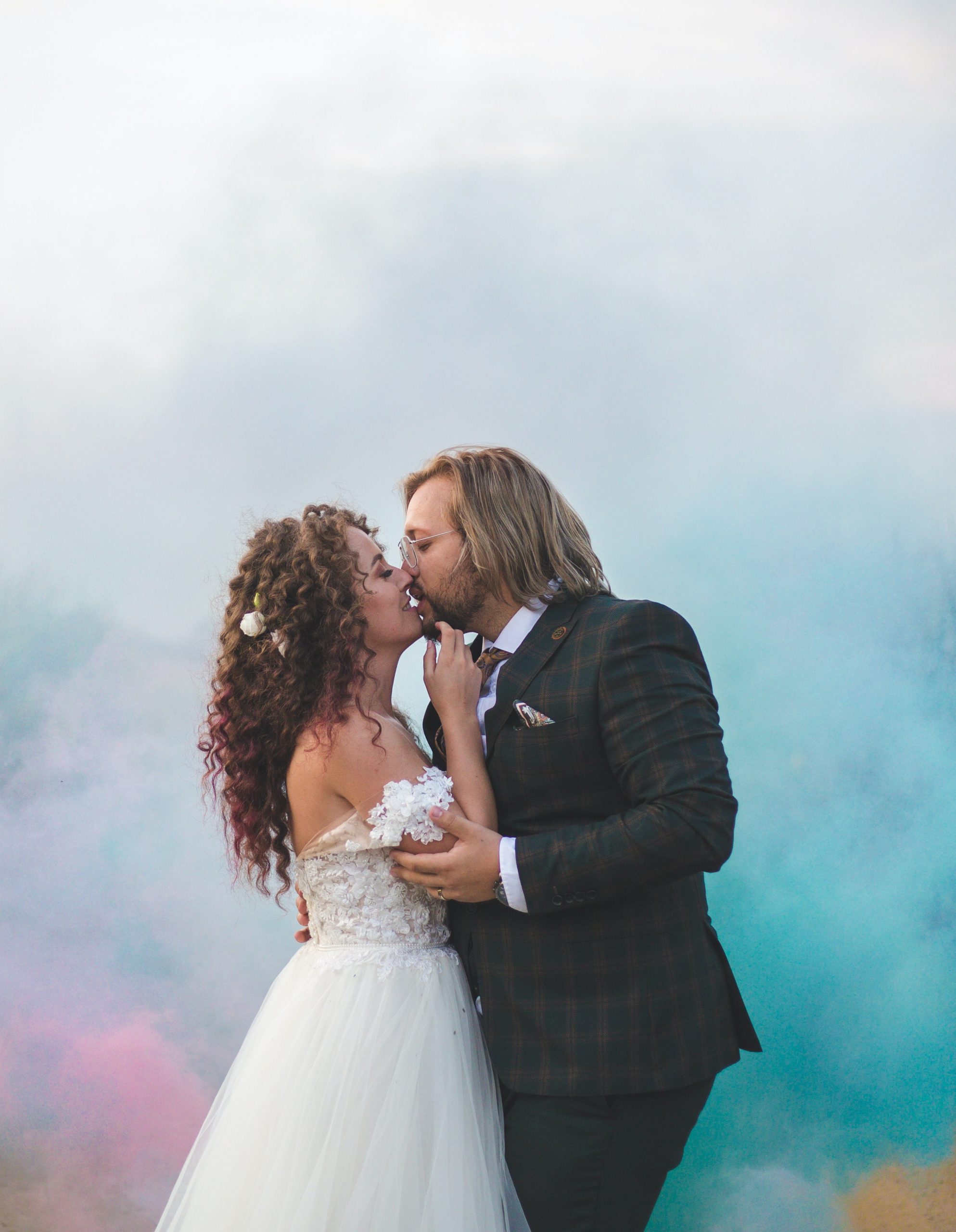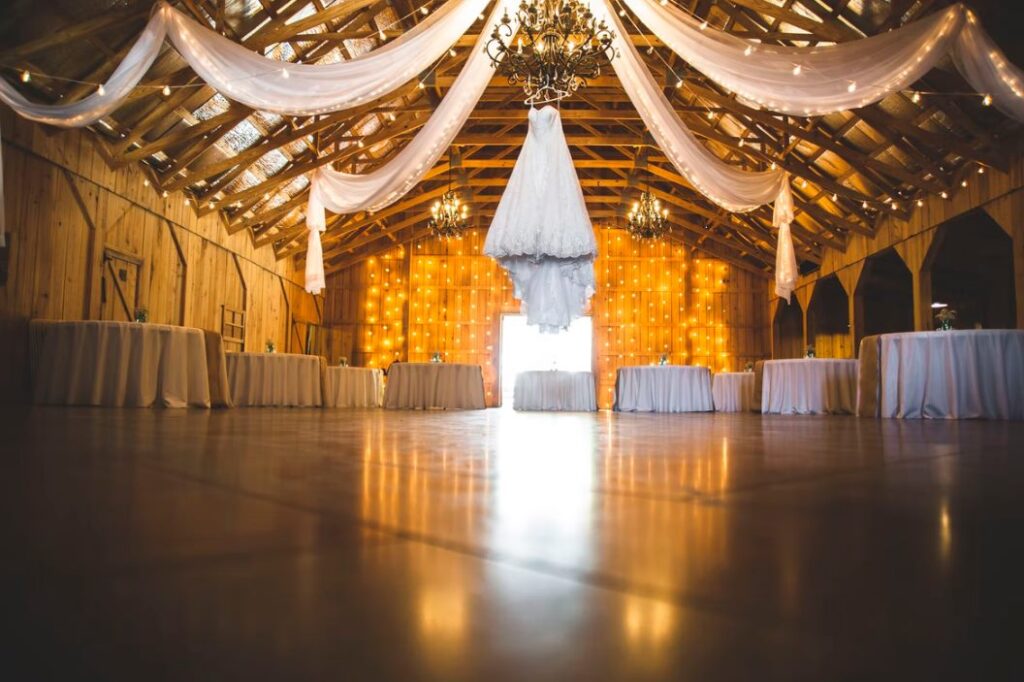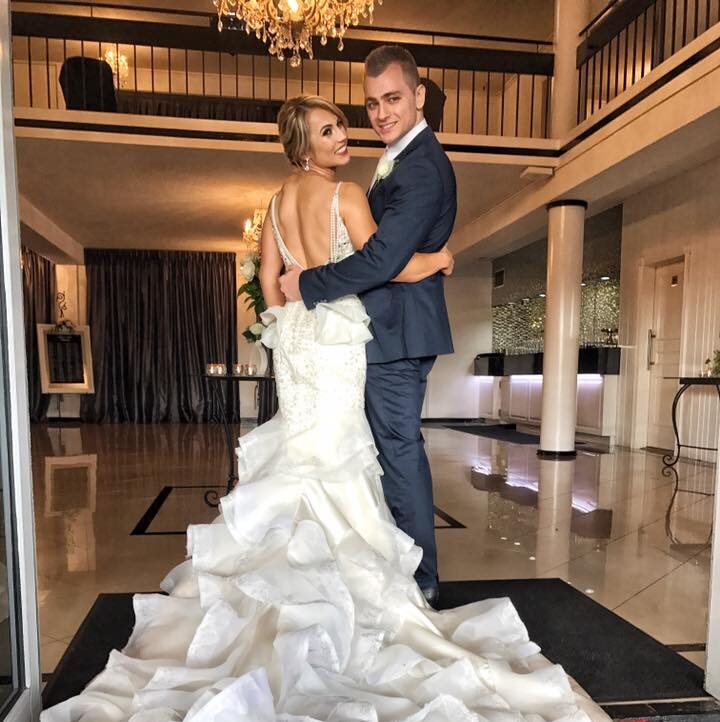Choosing your wedding’s colour scheme is one of the most exciting—and sometimes overwhelming—parts of planning. I remember how I felt when my partner and I started picking our colours. It was the first step in making our vision a reality. Your colour palette sets the mood for your day, influencing everything from your invitations to your reception decor. The good news? It doesn’t have to be a daunting task. In this guide, I’ll share practical tips, real-world examples, and expert advice to help you find a colour scheme that feels uniquely you and makes your wedding day unforgettable.
Why Your Wedding Colour Palette Is Key to Your Big Day
When my partner and I started planning our wedding at Vogue Ballroom, one of the very first decisions we made was the colour scheme. To be honest, I was a little overwhelmed at first, given the endless possibilities. But once we locked in our colours, it felt like the entire event started to take shape. From the invitations and flowers to the decor and the outfits, everything began to come together seamlessly.
Choosing your wedding’s colour palette isn’t just about picking a few pretty hues. It’s about setting the tone, creating a cohesive aesthetic, and reflecting your personal style. In fact, the colours you choose influence everything from the atmosphere to your guests’ experience, making it one of the most important decisions you’ll make.
How Your Colour Scheme Sets the Tone and Style of Your Wedding
Your colour palette is more than just an aesthetic choice—it sets the emotional backdrop for your whole wedding day. Whether you choose soft pastels for a romantic vibe, vibrant bolds for an energetic celebration, or elegant neutrals for a classy, timeless look, the colours you choose impact how everyone feels.
For example, when I was planning my wedding, we chose blush and gold as our main colours. The blush brought a soft, romantic feel, while the gold added a touch of glamour. As soon as we saw the reception room filled with these colours, it instantly gave off the warm, romantic energy we were hoping for. Choosing the right colours early on helped streamline decisions for flowers, linens, and even the wedding party’s attire.
How Choosing Your Wedding Colours Early Saves You Time and Stress
One of the biggest advantages of locking in your colour scheme early is that it simplifies many of the decisions that follow. Once you have your colours set, it’s much easier to decide on your flowers, linens, table settings, invitations, and even your wedding party’s outfits. Trust me, this can save you a lot of stress later down the track.
I remember a couple I worked with who were stuck between a few colour options just weeks before their wedding. They were unsure whether to go with a rich burgundy or soft blush. The delay in choosing the colours led to a lot of last-minute scrambling for décor and attire. However, once they committed to blush and gold, everything started to come together beautifully, and they were able to make faster, more confident decisions.
Key Factors to Consider When Choosing Your Wedding Theme Colours
Take Inspiration From Your Wedding Venue
Location is a major factor when deciding on your wedding colour scheme. If you’ve chosen a venue with a specific style or existing decor, it’s wise to complement those colours rather than clash with them. For example:
- Historic Venues often feature rich colours like burgundy, gold, or navy. Choose colours that complement these tones.
- Beach Venues: Lighter, breezier colours like seafoam green, coral, or sand can enhance the coastal vibe.
- Rustic Barns: Earthy tones, such as sage, terracotta, or warm neutrals, will enhance the natural setting.
Tip: If your venue has a neutral colour palette, you can choose any colour scheme that suits your taste.
Think About The Season
The time you get married matters a lot in determining your colour palette. Different colours evoke different feelings based on the time of year:
- Spring: Think of pastels like blush pink, lavender, or mint green. These colours reflect the freshness of the season.
- Summer: Bright, vibrant hues like coral, turquoise, or yellow are perfect for a summer wedding.
- Autumn: Rich, warm colours like maroon, burnt orange, or deep greens can enhance the cosy feeling of a fall wedding.
- Winter: Cool tones like icy blues, silvers, or deep jewel tones like emerald or navy are ideal for a winter wedding.
Key Point: Don’t feel constrained by the season; if you love a particular colour, find a way to incorporate it regardless of the time of year.
Reflect Your Style In Your Wedding Colour Scheme
Your style should shine through in your wedding colours. Consider the colours you are naturally drawn to in your daily life:
- Home Decor: If your home features a lot of soft greys, blues, or neutrals, you should incorporate these into your wedding.
- Wardrobe Choices: Do you prefer bold colours or soft, muted tones? Your wardrobe can offer clues to your preferred colour scheme.
Note: Your wedding colours should feel like an extension of your and your partner’s personalities.
Set The Mood With Your Wedding Colour Scheme
Your colour choices can enhance the mood you want to create at your wedding. Consider the following:
- Romantic: Soft pinks, creams, and blush tones create a dreamy, romantic atmosphere.
- Elegant: Black, gold, and deep purples or burgundies add a touch of luxury and sophistication.
- Fun and Playful: Bright, bold colours like fuchsia, turquoise, or lime green can make your wedding feel energetic and lively.
Reminder: Consider how you want your guests to feel when they enter your wedding space, and choose colours that evoke that emotion.
Use The Colour Wheel For Guidance
Refer to the colour wheel if you need help deciding which colours to choose. Some classic combinations include:
- On the colour wheel, complementary colours are those opposite, such as blue and orange, which create a vibrant contrast.
- Analogous Colours: These sit next to each other, like blue, teal, and green, offering a more harmonious and calming effect.
Practical Tip: Choose a primary colour and add one or two complementary or analogous colours to build your palette.
Keep The Wedding Style In Mind
Your wedding style or theme can also guide your colour choices. For instance:
- Vintage Weddings: Soft, muted colours like dusty rose, sage, or champagne work well.
- Modern Weddings: Bold, monochromatic colour schemes with pops of metallics like silver or gold can create a sleek, contemporary look.
- Bohemian Weddings: Earthy tones with vibrant colours like mustard, terracotta, and emerald green are ideal.
Advice: To ensure a cohesive look, let your wedding style lead your colour decisions.

It’s easy to get caught up in the excitement of choosing your colours, but there are a few common mistakes to avoid to ensure your wedding palette looks polished and cohesive.
How Too Many Colours Can Ruin Your Wedding Look
One of the most common mistakes couples make is choosing too many colours. While it can be tempting to include every colour you love, sticking to 3-5 main colours will keep your palette looking cohesive and elegant. I’ve worked with couples who wanted to incorporate every shade of the rainbow, but the result was overwhelming.
It’s best to have one or two main colours, a couple of secondary neutral tones, and maybe one metallic or accent colour for flair. This creates balance and ensures the colours complement each other without clashing.
Avoiding Clashing Colours and Overly Trendy Palettes
Not all colours work well together, and it’s crucial to avoid clashing hues. To ensure your colours harmonise, refer to a colour wheel or consult an expert if you’re unsure. A complementary colour scheme (using colours opposite each other on the colour wheel) works well, but be mindful of how they interact in the space.
One couple I worked with wanted to incorporate neon pink and neon green—two colours that are very trendy at the moment. However, the clash of these bold tones didn’t fit with their elegant venue and made the space feel more chaotic than cohesive. After discussing their options, we chose a softer combination of blush and gold, which still gave them the boldness they wanted but in a more refined way.
Choosing Colours That Clash With the Venue/Theme
Another common mistake is choosing colours that don’t align with the venue or theme of the wedding. For example, a dark, moody colour palette may not work well in a venue with large, airy windows and natural light. Similarly, vibrant colours might feel out of place in a rustic barn setting.
It’s essential to choose colours that complement your venue’s architecture and natural surroundings. If your venue is an urban warehouse with high ceilings and raw concrete, bolder colours like charcoal or deep burgundy will complement the space beautifully. On the other hand, for a more traditional church setting, softer, pastel colours might work better.
Playing It Too Safe: Be Bold with Your Colour Choices
Don’t be afraid to push the envelope a little bit with your colour choices. While neutrals and soft pastels are classic, there’s something special about a bold, unexpected colour palette. One couple I worked with wanted a traditional white and cream wedding but decided to add a pop of bold royal blue in the bridal party attire. The result was striking and memorable—yet still cohesive.
If you’re worried about being too bold, try incorporating unexpected pops of colour in smaller details, like your cake design, napkins, or reception decor. This allows you to add excitement without overwhelming the overall theme.
Key Takeaways and Insights
Choosing your wedding colour scheme can be one of the most enjoyable parts of your wedding planning process. When you make thoughtful choices and align your colours with your venue, style, and theme, you’ll create a beautiful, cohesive event that reflects your personalities and vision.
Choosing a Colour Palette You’ll Love: Practical and Personal Tips
As I’ve mentioned throughout this guide, it’s important to pick colours that reflect your personal style and make you feel happy. Don’t get too caught up in trends—what matters most is that your wedding colours resonate with you and your partner. And remember, it’s okay to change your mind or tweak your colours as you go. This is your day, and it should feel true to you both.
Let’s Get Straight to the Point
Choosing your wedding’s colour scheme is key to setting the tone and creating a cohesive aesthetic. Start by reflecting on your personal style, wedding theme, and venue to help guide your decision. Your colours should complement the space, evoke the right mood, and align with the season. Aim for a balanced palette with 3-5 colours, including main hues, neutrals, and metallic accents. Draw inspiration from real weddings, fashion, and nature. Don’t be afraid to incorporate bold or unique colour choices, and consult your wedding planner for expert advice. With careful planning, your wedding colours will tie everything together beautifully.



